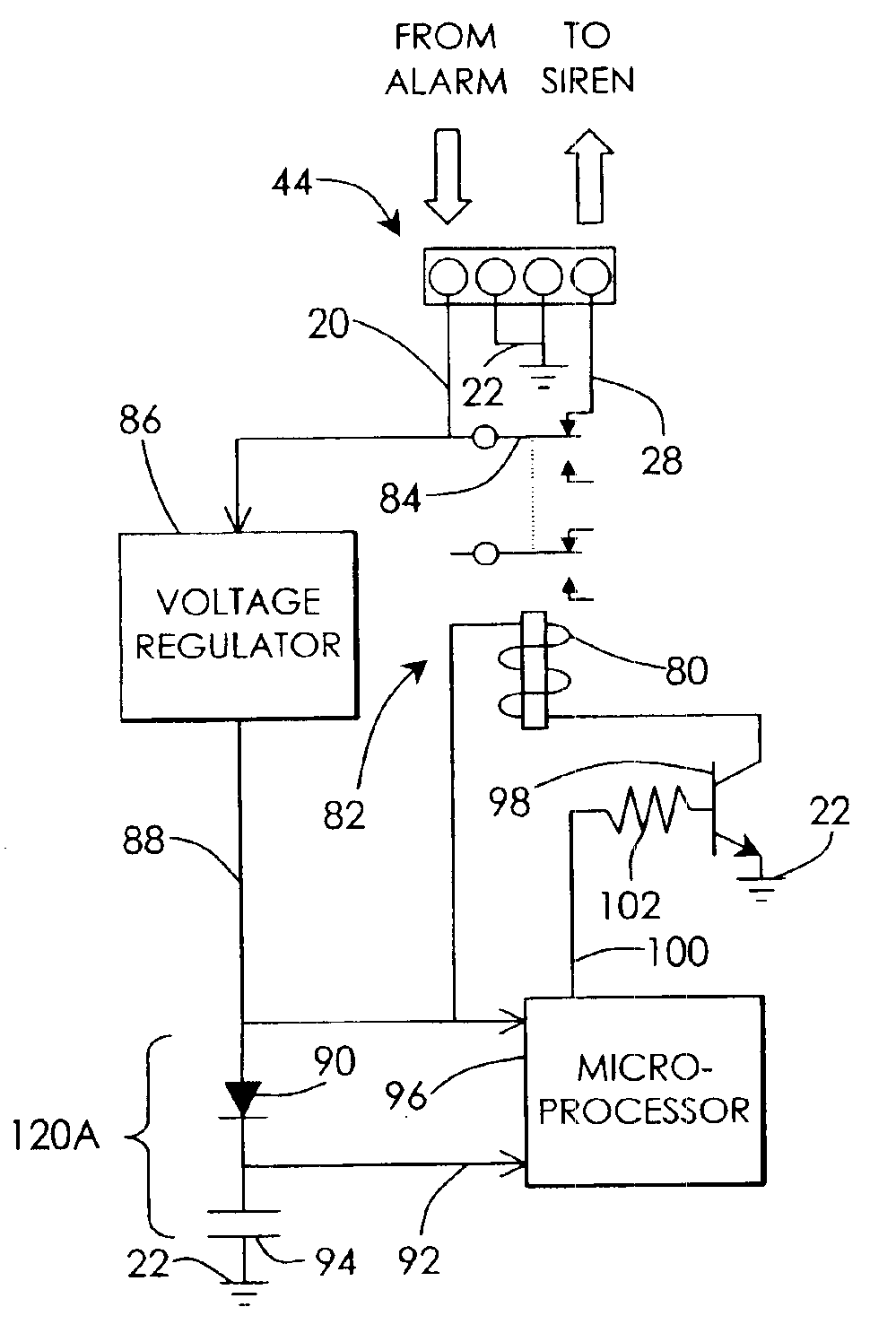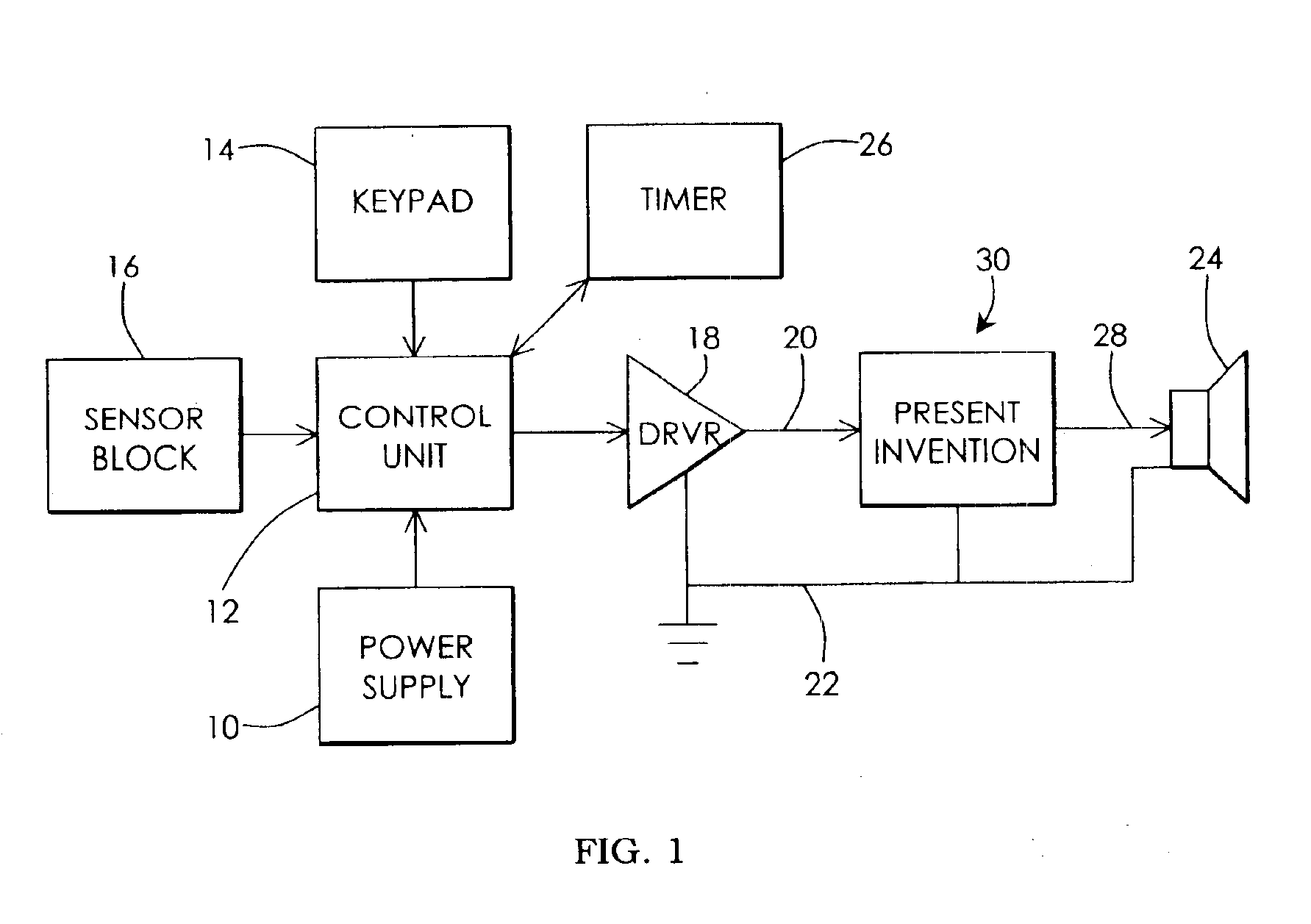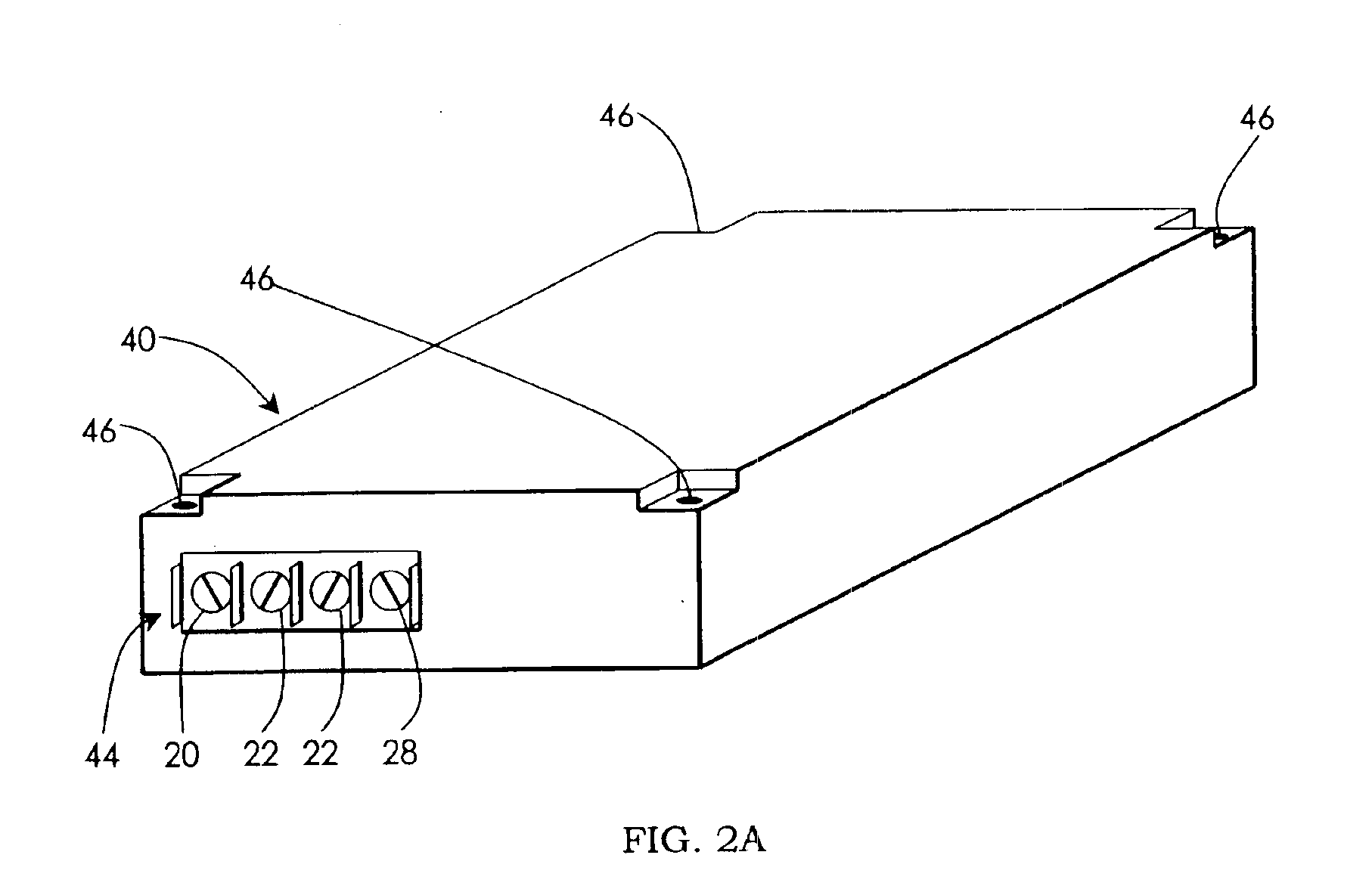Automatic siren silencing device for false alarms
a technology of automatic siren silencing and false alarms, applied in audible signalling systems, instruments, electric/electromagnetic audible signalling, etc., can solve the problems of low noise pollution, low noise pollution, and low noise pollution in the community, so as to reduce the duration and frequency, and reduce the noise pollution endured by neighbors
- Summary
- Abstract
- Description
- Claims
- Application Information
AI Technical Summary
Benefits of technology
Problems solved by technology
Method used
Image
Examples
Embodiment Construction
Reference will now be made in detail to a preferred embodiment and alternate embodiments of the present invention, examples of which are illustrated in the accompanying drawings. While the invention will be described in conjunction with these preferred and alternate embodiments, it will be understood that they are not intended to limit the invention to these embodiments. On the contrary, the invention is intended to cover alterative, modifications, and equivalents, which may be included within the spirit and scope of the invention as defined by the claims.
FIG. 1—Description of Parts and Operation
Referring initially to FIG. 1, there is shown a conventional alarm system with the present invention installed. A block representation of the present invention 30 is shown installed between an alarm system siren output or siren driver 18 and a siren 24. Three signals interconnect siren driver 18, invention 30, and siren 24. Firstly, a ground signal 22 connects to siren driver 18, invention 3...
PUM
 Login to View More
Login to View More Abstract
Description
Claims
Application Information
 Login to View More
Login to View More - R&D
- Intellectual Property
- Life Sciences
- Materials
- Tech Scout
- Unparalleled Data Quality
- Higher Quality Content
- 60% Fewer Hallucinations
Browse by: Latest US Patents, China's latest patents, Technical Efficacy Thesaurus, Application Domain, Technology Topic, Popular Technical Reports.
© 2025 PatSnap. All rights reserved.Legal|Privacy policy|Modern Slavery Act Transparency Statement|Sitemap|About US| Contact US: help@patsnap.com



